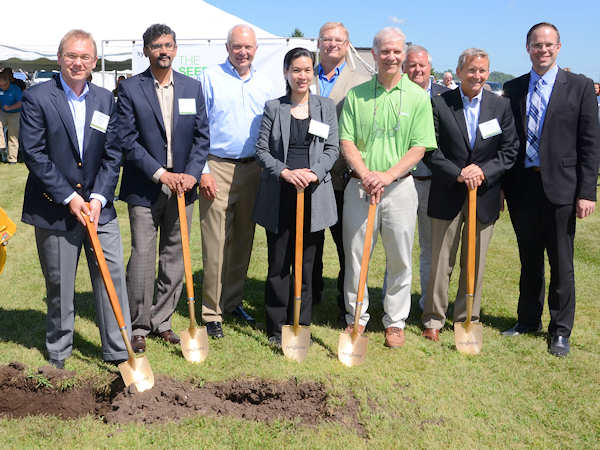August 18, 2015

The township of Stanton, Minn., is kind of a wide spot in the road, yet it's known for two interesting features. First is the airport where gliders are a popular pastime, but the bigger features is the Syngenta field research facility.
Recently, the company broke ground on a $20 million expansion of its North American Seedcare Institute that will bring a new 38,000 square-foot building to the research farm.
The North America Seedcare Institute was already in Stanton, but this expansion brings a new level of research, and training, to the mix. "This is an important day for us," says Palle Pedersen, head, seedcare product marketing. "Seedcare products provide plants with a healthy start and help to achieve increased yield, crop quality and profit potential."
The event, which drew a range of dignitaries, is the start of a significant continued investment in seedcare, a business Syngenta first entered in 1979 with Concep, a seed safener first used in sorghum. The company has pioneered uses of fungicide and other additives during the next 35 years.
The new facility will house high-tech laboratories for research and development, treating, plantability, dust-off and quality assurance. It will also include a scale-up treating area, a treating equipment performance area to simulate real-life experiences for customers, a training facility, seed warehouse and office and meeting space.
Seed treatment popularity
Pedersen notes that as many as six active ingredients are now being applied to seed, which pushes up the need for research into maximizing the technology.
Ponsi Trivisvavet, regional director, North America, and president, Syngenta Seeds, points to the company's Good Growth Plan, a global sustainability initiative focused six corporate commitments. "This expansion shows our focus on the first of the six - make crops more efficient," Trivisvavet says. "Farmers challenges are becoming increasingly complex."
She pointed to the corporate investment of $1.3 billion in R&D annually, with this latest expansion showing the future commitment the company has.
As for the six commitments of the Good Growth Plan? They include: Make crops more efficient; rescue more farmland; help biodiversity flourish; empower smallholders; help people stay safe; and look after every worker.
Ravi Ramachandran, head of Syngenta's North America Seed Care Institute, adds: "Our customers require highly specialized products and services from us. As a result, the solutions we work on today are much more sophisticated than they were five to 10 years ago. The seed treatment business has evolved, and the products we develop require an increased level of training for our seed company customers, ag retailers, applicators and farmers."
Syngenta currently operates 10 Seedcare Institutes globally, but an 11th will open in Singapore soon. The global network allows the company to fine-tune application rates, and match products to specific markets. The Stanton, Minn., facility is one of those 11 global sites, and this expansion is a key move for the company in the seedcare business. The facility will be completed by the end of 2016.

The recent groundbreaking for the expansion of Syngenta's North America Seedcare Institute drew a range of dignitaries, from left: Palle Pederson, seed care product marketing; Ravi Ramachandran, head, North American Seedcare Institute; Rep. John Kline, R-Minn.; Ponsi Trivisvavet, president, Syngenta Seeds; Wade Cowan, president, American Soybean Association; Bob Wernimont, facility manager, Stanton, Minn.; Chip Bowling, president, Corn Board, National Corn Growers Association; Tim Kroenke, head, seedcare, North America; and Matthew Wohlman, assistant commissioner, Minnesota Department of Agriculture.
About the Author(s)
You May Also Like






